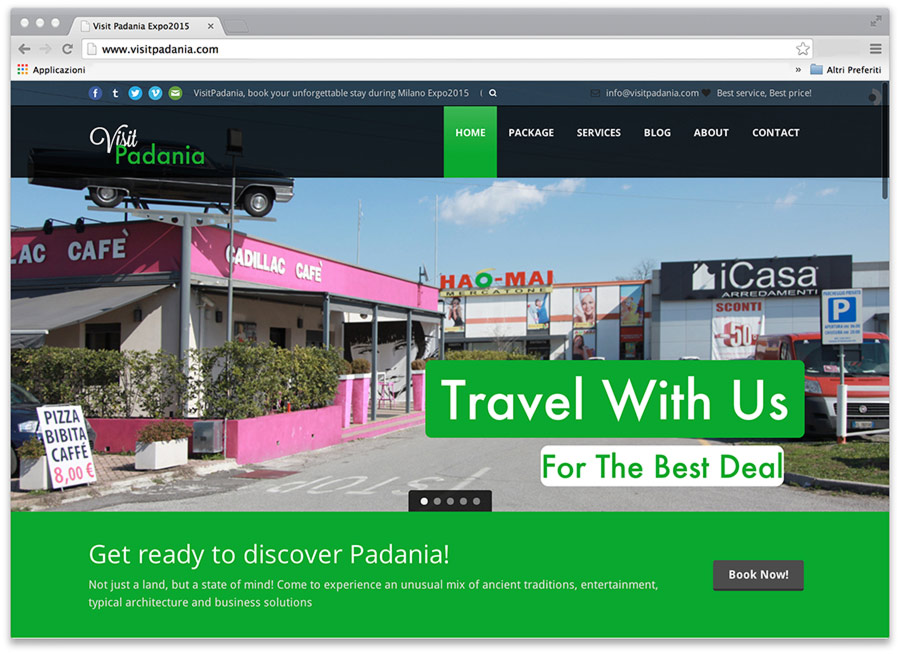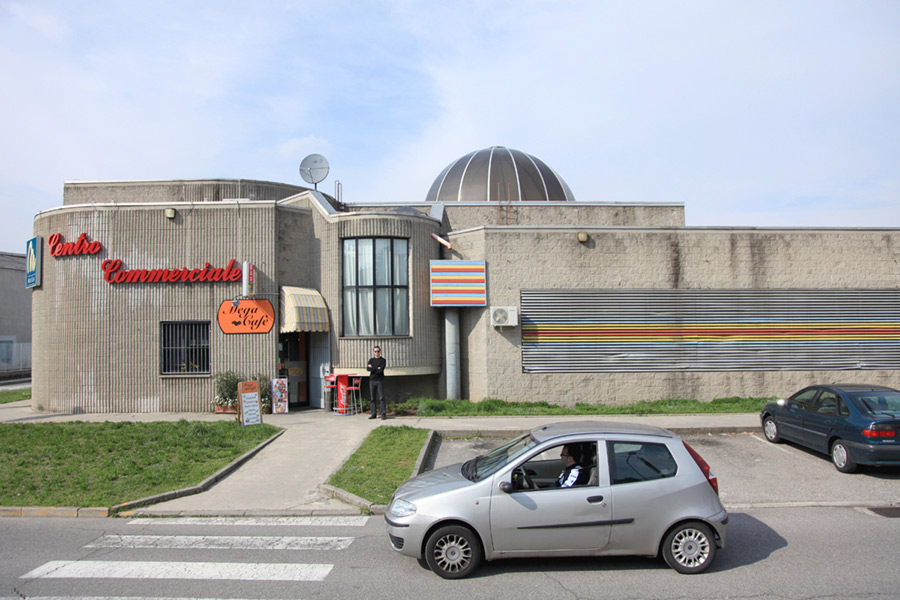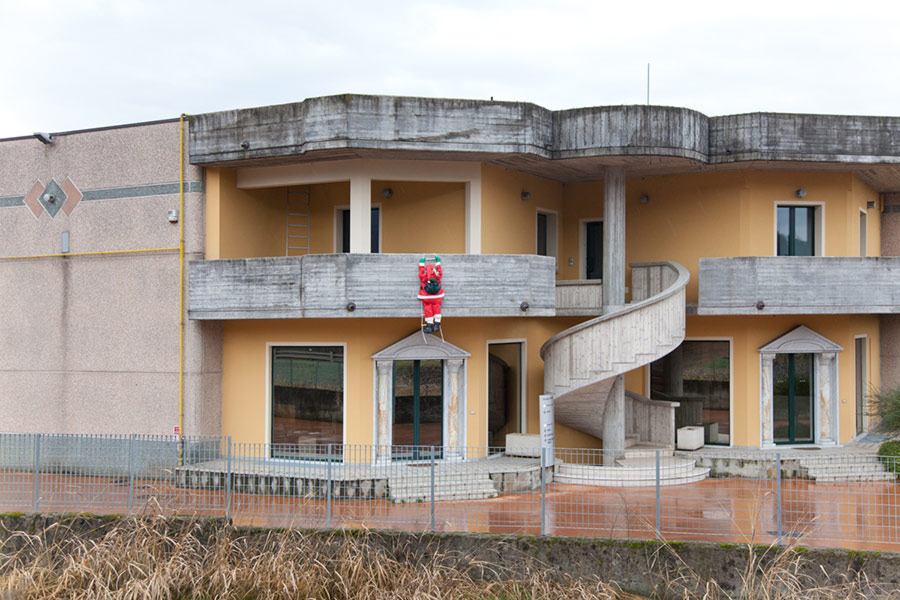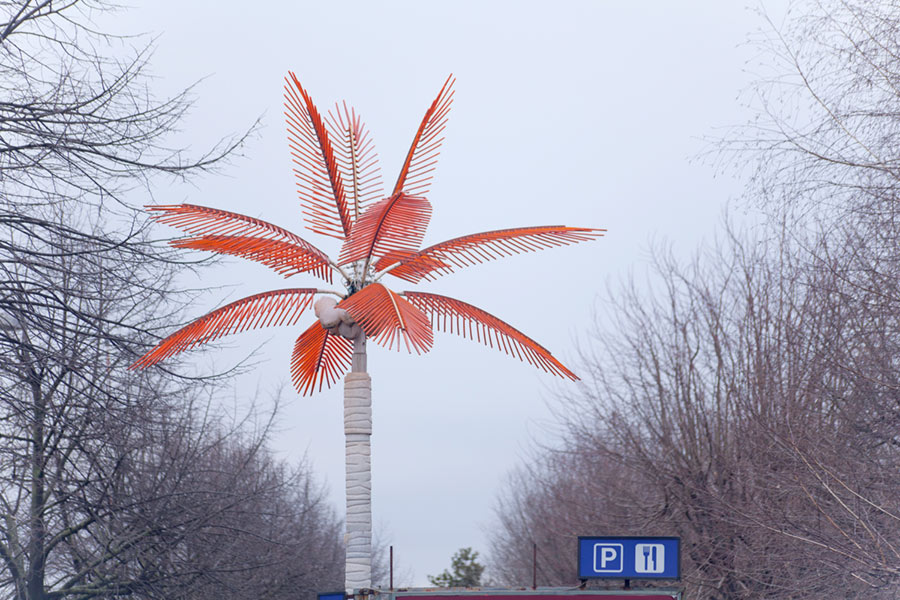YEAR
2010
ongoing
EXHIBITED
La Triennale di Milano – IT
Fondazione Francesco Fabbri – IT
Fotografia Europea -IT
Forma Meravigli – IT
LOCATIONS
Northern Italy
Contemporary landscape and Urbanalization
Padania Classics is a landscape research project analysing contemporary landscape to identify aesthetics and architectural specificities of ‘Padania’, a Nation formerly not recognised by anyone but deeply modified by political movements exploiting the loss of identity that characterised the last forty years of un-precedent urban sprawl in Northern Italy, to foster the hope of secession from Italy as a way to create consensus.
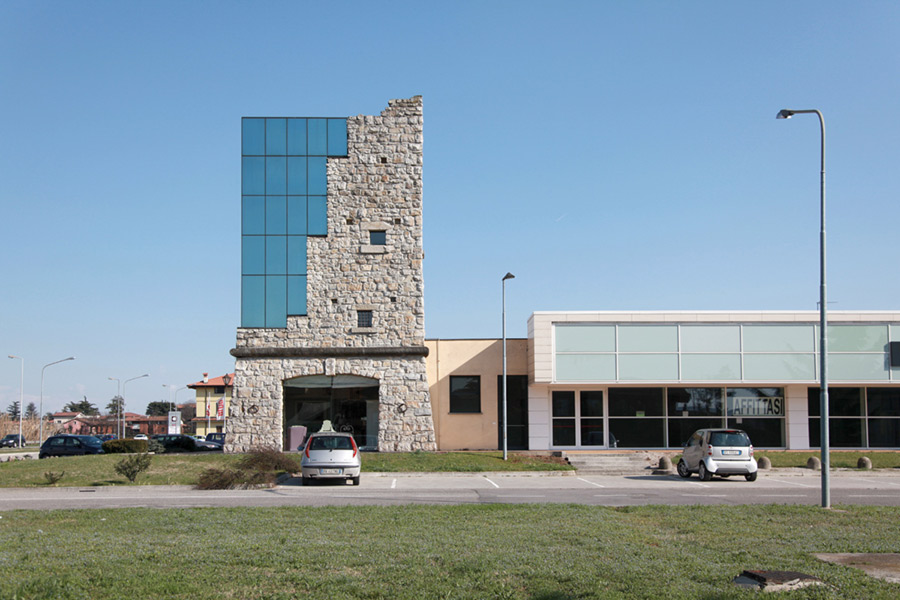
Political rhetoric for decades presented Padania as a territory with different characteristics from Italy: ethnically diverse from the Romans, superior in moral terms, economically advanced and alien to common Italian clichés like corruption and mafia. Reality shows an undefined landscape that could easily be ubiquitous, that has all the characteristics of any other suburbia of the world developed during the same period. Is the flattening of landscape characteristics one of the reason of the rise of identitarian movements? What is identity without historical references?
Exploring the megalopolis stretching from the Adriatic Sea to French Alps is possible to understand the role of what Spanish geographer Francesc Munoz called ‘Urbanalization’, the worldwide flattening of architectural and urbanistic specificities which contributed to create a new kind of landscape: from European province, a place with very defined aesthetic and social features to periphery of the world.
Formally not recognized by anyone, Padania was supposed to be an independent State separated from the Italian Republic in the ’90s, as proposed by a referendum for the independence that was held in 1997 in each city Council in Northern Italy; the struggle for independence was both on an social and institutional level. While activists painted walls and streets with pro-independence slogans a political party called Lega Nord (Northern League) struggled in Parliament to get answers to the pressing demand for federalism.
The plan for an independent State faded over the years, but the tension generated by the struggle for power made possible a no less important unification of the landscape. Thanks to the work of public administrators of both right and left-wing parties, Padania has become over the years an incredibly present aspect in the routine of its inhabitants, an aspect recognizable within the landscape and human behaviors.
Main cities and historic centers are only a tiny fraction of what northern Italy is. The mixture of rural, industrial, commercial and residential districts on wide scale is a feature difficult to observe elsewhere in Europe and in the world; this is the element that visually unifies the entire aesthetic of Po River valley.
From Western Alps to the edge of the Adriatic Sea a scattered urban-development regulated by locally administered policies gave every small village the possibility to build its own industrial or commercial district, allowing the birth of what Eugenio Turri in his 1995 book called ‘Megalopoli Padana’.
This megalopolis is not a urban aggregation but a constellation of small, medium and large towns melting into each others giving the valley an unusual and different look, if compared to its previous agricultural vocation.
Piedmont, Lombardy and Veneto as well as being physically merged into a continuum of buildings with architectural analogies from Venice to Turin, are also de-facto administratively unified since 2013 into what politicians themselves call the Macro-Region.
ATLANTE DEI CLASSICI PADANI
Atlante dei Classici Padani is the book containing 5 years of work by the ‘Padania Classics’ project. Divided in 18 chapters this book analyzes in obsessive way subjects related to what separatist politicians call the Macro region: from urbanism based on overbuilding to the God of Gold, from waste dumping to architecture and absurd monuments, from politics to religion, from betting to ‘oriental’ massages providing a full insight about contemporary landscape and human behaviors of Northern Italy. The book was financed also thanks to an online and offline crowdfunding in which private donors supported the project making it participative.
720 pages | 1000 geotagged pictures | Hard cover | Photographic and uncoated paper | ITA/ENG texts | ISBN 978-88-905337-1-6
Concept and Photography © Filippo Minelli, Published by Krisis Publishing, Introduction Carlo Sala, Texts Emanuele Galesi, Infographics Alberto Antoniazzi, Illustrations Marta Comini, Translations Anna Carruthers
Sold Out
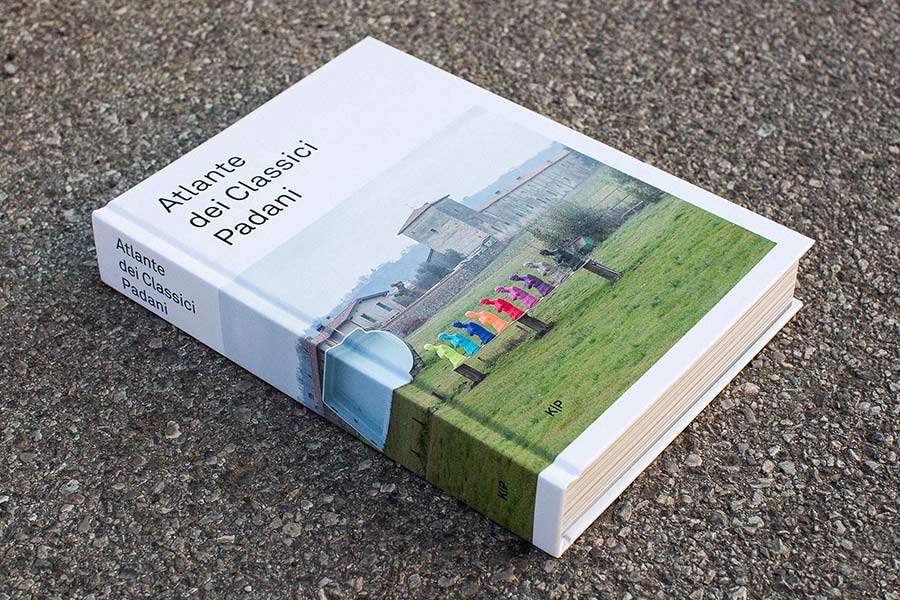
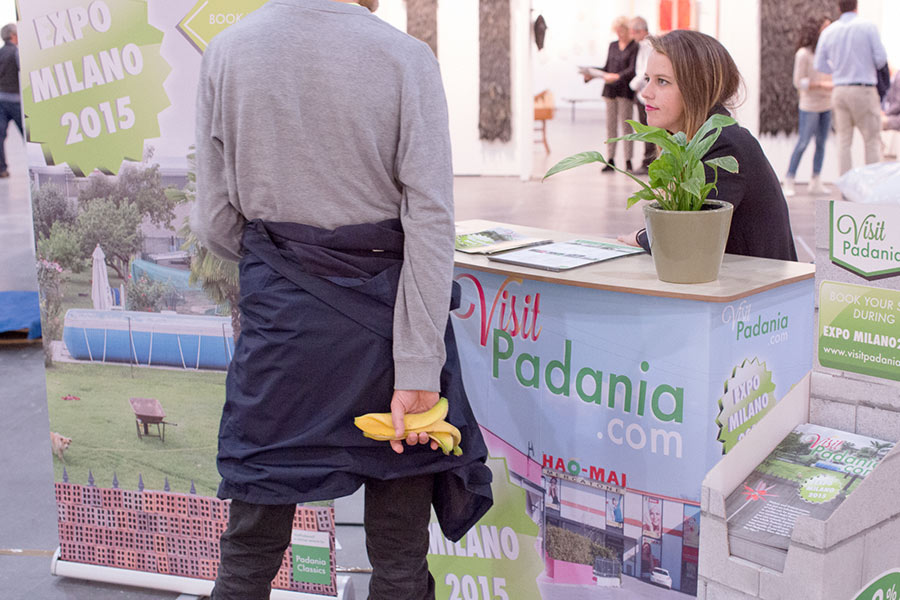
VISIT PADANIA
VisitPadania© is a fictional touristic booking-website created to help people willing to discover Padania during the upcoming World Expo2015 in Milano.
Launched in April 2014 VisitPadania© was the first booking platform specifically created for Expo2015, and being translated in four different languages it became the first landing page for people searching accommodation from abroad.
VisitPadania© also appeared at fairs with an hostess distributing promotional material at the booth, and in 2017 hosted a one-day touristic bus tour in the urban sprawl of northern Italy inviting architects, anthropologists, photographers, environmental activists, artists and videomakers in what became a surreal conference on four wheels.
Tell-tale fog
Padania is renowned for its fog. Although a satellite would depict it as a smooth green stretch of land, the largest uninterrupted flat surface in Italy and one of the vastest in Europe, fog is a big part of it. A thick grey fog, rising from the rice fields and blurring the edges of its unsettled architecture. Malls, warehouses, gas stations. Houses, offices, parking lots. As far as the eyes can see. Which is not far, when the fog is at its thickest.
When the sun shines over Padania though, details do emerge. A plastic cow on a perennialbreak from pasturing, its attention perhaps caught by a red Santa Claus that hangs from the balcony of a peach-coloured, classic brutalist villa. The yellow sign of a sushi restaurant, an empty billboard, a palm tree, a religious monument. Construction sites fenced with orange plastic, workers’ toilets made in blue plastic. A whole polymeric rainbow glowing through the greyness of the concrete, a greyness that survives the fog.
‘It’s something that manifests itself, something you can’t explain’, Filippo Minelli once told me. ‘There is always an inexplicable element that makes places what they are. Silence and light are always there, especially in the natural or abandoned environments I look for. If you visit them by yourself you realize there is something that contains the landscape, and that thing is silence. Silence in the desert is different from silence on the mountains, or again from the silence you experience while stopping at a red light in the city. I wanted to give that element a physical shape.’
The shape he was talking about back then, when I was once again interviewing him about his work, was a brightly-coloured cloud of smoke, a pink apparition hovering on the surface of a pond. A lot like fog.
The stunning materialisation of silence Minelli achieved with his Silence/Shapes series (started in 2009, on-going) represents a kind of aesthetic epiphany for the Brescia-born artist. A huge leap from his graffiti days it was also thefirst sign of a conscious embrace of a medium – photography – that he had previously deployed mainly as a recording device.
Among the pioneers of street art in his home country, Filippo benefited from the Internet and the then- blossoming blogosphere to cross borders with his work, and snapshots did help. Before silence became his focus though, he felt compelled to mark, if not vandalize, the sites of his more or less ephemeral interventions. One of his most powerful series, Contradictions (started in 2007, on-going), consists mainly in spray-painting the names of famous dot- coms in decaying locations or poverty-stricken areas around the world. As in most of Minelli’s work, the writings were site-specific, but the increasing focus on framing and context bestowed more and more relevance on the final picture. And in Silence/Shapes the intrinsic ephemerality of taking a picture of a dissipating cloud of smoke was even more important. Developed in a difficult period in Filippo’s life, when the fleeting nature of existence was likely to be on his mind a lot, the recognition of the extra element he was talking about in the quote above reflected a new level of maturity. But luckily Filippo hasn’t turned ascetic, and it turns out silence is not all he wants to convey through his art.
Frustrated by the impossibility (due to medical reasons) to travel as far as he wanted to, for some time Minelli found himself cruising around in his car, across the region where he had grown up. That’s when the fog really dissipated. The industrious hinterland of Brescia, with its unique blend of residential, industrial, and agricultural spaces, inspired yet another of his projects, arguably his most comprehensive to date.
When I first started seeing Padania Classics pop up in my newsfeed, I thought it must have been some sort of side project to Filippo, something to keep him going until he could properly travel again. But the subtlety of those shots, the first in which his interventions are nowhere to be seen, lies in their radical banality. Words – their absence hovering over the scene in a gaseous state – are no longer necessary.
Without the inexplicable element, or perhaps entirely imbued in it, the landscape speaks for itself. The irony of Minelli’s Contradictions is inherent in the Macro Region (the captions are still funny, though).
Padania’s ugliness is a little different from that of the many other places where architecture is merely a manifestation of a practical necessity. A political construct leveraged by the right wing separatist party of Lega Nord, Padania’s non-sophistication is a cultural project rather than a contingency. Its proudest soul is deeply seated in a very specific dimension, one where an unstoppable productivity links small local enterprises with one another and, at least business-wise, with the rest of the world.
A strong muscle in Italy’s economy, Padania doesn’t benefit from particularly good weather or any other Italian stereotype, which it rejects anyway. The ‘Made in Italy’ label is big in Padania and the Macro Region comprises most of the richest and most densely populated areas in Italy – a pretty big achievement consideringthat it is mostly built on sediments and swamps – but its self-described denizens barely acknowledge the rest of the Boot, claiming Celtic roots rather than Roman.
Minelli’s Padania Classics taps into that dimension, that imagery. Between mockery and identity survey, Filippo is depicting a schizophrenic territory, torn between a need to belong to itself – the cultural premises on which Padania is unofficially funded are an object of debate – and the routine accommodation of the global flows of business. Which brings us to Milan Expo 2015 and VisitPadania.com.
As I wrote before, Minelli is no stranger to the media, especially the Internet. Its inner workings have been part of his activity for a long time, and even though the website looks even sleeker than I expected, snatching the VisitPadania.com domain name is exactly the type of thing a consummate tagger would do.
Far from simply hijacking web traffic to his Tumblr, Filippo put up a whole commercial apparatus in order to advertise his beloved Macro Region, for those who, coming from all corners of the world, wish to learn something about the thickly urbanised area surrounding the celebrated capital of Lombardy.
The automatically generated multi-lingual translations are bad enough to be credible for an Italian website, and the packages are competitive: for as little as €950 a night he picks you up at the airport, rents you a limo and takes you to the finest strip clubs. For a moderate €140 per person he takes youcamping, feeds you grilled meat and unveils the hallucinogenic secrets of the Padanian meadows.
The most refined might consider the art tour: making your wallet €6500 lighter, it features a presentation of local arts with an art critic plus meals and beverages.
There’s no telling whether any confused tourists will fail to perceive the tongue-in-cheekiness of it all and book an arrangement, or if the site will remain just a brilliant hoax gaining media traction for its political undertones and perfect timing. In case someone from Shanghai or Abu Dhabi might fall for it though, I am sure they wouldn’t wind up stranded in Orio al Serio, Bergamo’s airport. They would probably find a real limo with a tacky pawnshop logo stencilled on it waiting for them and someone ready to introduce them to the wonders hiding behind the thick grey fog.
Nicola Bozzi, Amsterdam 2014
